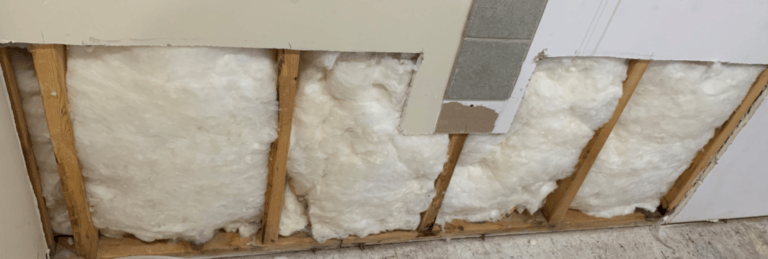How to Use Cheap Level5 Drywall Tools Like a Pro
As a seasoned contractor, I remember setting out on my first big drywall project. Armed with passion but limited cash flow, I discovered the incredible world of affordable tools that still do a professional job. It was at that moment I stumbled upon Level5 Drywall Tools. With a blend of practicality and affordability, these tools transformed not just my work, but also my perception of drywall finishing. This post will walk you through how to efficiently use Level5’s budget-friendly tools like a pro, so you can achieve flawless results without breaking the bank.
Understanding the Importance of Quality Tools
Why Invest in Drywall Tools?
Investing in the right drywall tools can significantly enhance your work quality and efficiency. While many might think cheap tools lead to poor craftsmanship, Level5 proves otherwise. Their line of affordable tools delivers a surprising performance without compromising on durability or effectiveness.
Essential Drywall Tools for Professionals
Before diving into usage tips, let’s highlight some essential tools offered by Level5 that make a significant difference:
- Taping Tools: Critical for smooth joint taping, which affects the final finish.
- Skimming Blades: Perfect for providing a smooth and even coat of compound.
- Automatic Taper: Saves time and effort while delivering consistent results.
- Flat Boxes and Corner Finishers: Ensure a flawless finish, especially in tricky areas.
Getting Started with Level5 Drywall Tools
Step 1: The Right Preparations
Before you begin, proper preparation not only sets the stage for success but also ensures you have a smooth workflow:
- Gather Your Tools: Ensure you have all necessary items, including a Level5 mud pan, joint knives, and taping knives.
- Read Instructions: Familiarize yourself with the user manuals for any automated tools, like the automatic taper.
- Set Up a Clean Workspace: Clear the area of debris to prevent accidents and maintain focus.
Step 2: Technique Matters
Efficient Taping
Using Level5 taping tools effectively can help in achieving seamless joints:
- Load the Tape: Make sure your tape is loaded correctly into the tool and adjusted for tension.
- Timing: Apply the tape as soon as the mud begins to set for better adhesion.
- Pressure: Use firm but gentle pressure to keep the tape straight without tearing it.
Step 3: Applying the Compound
Use of Mud Pans and Knives
Applying joint compound efficiently requires both the right tools and technique:
- Mud Pan: A Level5 Mud Pan allows for easy access to your mud, minimizing waste.
- Joint Knife: Choose a knife width based on the area you’re covering—wider knives for larger surfaces, narrower for seams.
Step 4: Finishing Touches with Skimming Blades
For a professional appearance, leveling out your compound is crucial:
- Choose Your Skimming Blade: Go for a Level5 Skimming Blade that fits your task.
- Angle and Pressure: Adjust the angle of the blade as you skim to ensure an even application, adjusting pressure as needed for the best finish.
Step 5: Mastering Automatic Tools
Automatic tools can speed up your finishing process while providing consistent results:
- Flat Boxes: Utilize Level5 Flat Boxes to cover surface areas quickly. Keep them clean between uses to prevent clogs.
- Corner Finishers: The Corner Finisher is essential for professional-looking internal corners. Angle the tool correctly to avoid compound build-up.
Step 6: Cleaning and Maintenance
Proper cleaning will help you get the most out of your Level5 tools:
- Cleaning Immediately: After use, clean your tools promptly to prevent dried mud from compromising functionality.
- Regular Inspections: Check for any wear or damage regularly, especially with automatic tools, to ensure optimal performance.
Bonus Tips: Insider Secrets for Faster Finishing
Save Time with Efficient Techniques
- Batch Your Work: Apply mud to multiple seams at once rather than one at a time.
- Use Cold Water: When mixing mud, using cold water allows for a longer working time before the compound starts to set.
Follow-Up Finishing Techniques
Be meticulous with your final touches:
- Sanding: Lightly sand the area after the compound dries for a smooth finish. Use a fine-grit sandpaper to avoid deep scratches.
- Dust Removal: Remove dust using a damp sponge before applying additional coats for optimal adhesion.
Troubleshooting Common Issues
Even with the right tools, issues can arise:
- Bubbles in Compound: Usually due to too much pressure when applying. Reduce the pressure and smooth out with a lighter touch.
- Cracking: Often a result of the compound drying too quickly. Make sure to work in appropriate temperature and humidity levels.
Conclusion
Using Level5 drywall tools effectively is all about technique, practice, and consistent effort. With the right approach, you can make cheap tools work like high-end solutions. The next time you’re embarking on a drywall project, remember these tips, keep your tools maintained, and don’t hesitate to invest in quality during your planning.
If you’re curious about advanced techniques, don’t forget to check out The Best Drywall Taping Techniques to further elevate your skills, or explore Drywall Skimming Tips for a Flawless Finish to perfect that final touch. How have your experiences with drywall tools shaped your projects? Share your stories in the comments below!



